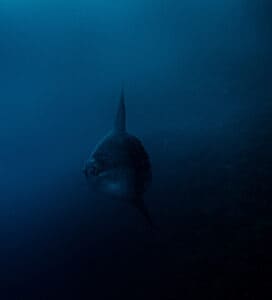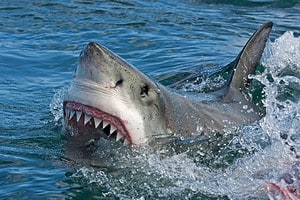We have scoured the waters and looked at the 3.5 trillion fish that are in the Earth’s waters. As we can imagine these fish have trillions of names that so many dedicated scientists have renamed with common names to make it easier for people to research and pronounce.
We will find that a lot of the common names of fish can have a direct reflection on what those fish look like. For example, in this article, we will discuss the yellow bass fish, yellow bullhead catfish, and yellow tang fish. These fish all have two things in common. One, they all start with the letter “y.” Second, they are all yellow in appearance!
Let’s take a look at the top 10 fish we found that start with the letter “y.” Next, we will move on to the largest fish that starts with the letter “y.” Lastly, we will end by providing you with a complete list of 80+ fish whose common names start with the letter “y” and a list of their scientific names.
Yellow Bass (Morone mississippiensis)
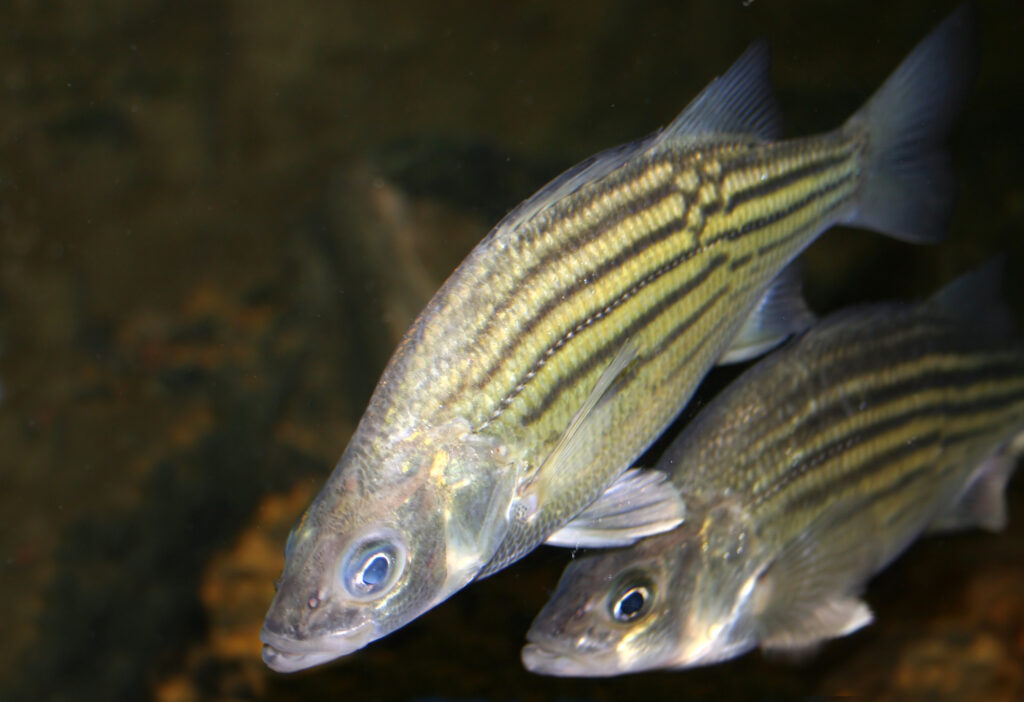
The yellow bass gets its specific name (mississippiensis) from the Mississippi River.
©Kevin H Knuth/Shutterstock.com
The smallest member of the temperate bass family is the yellow bass (Morone mississippiensis) of the family Moronidae. They weigh only one pound and reach between 5-11 inches long. There is one yellow bass that weighs 2.95 pounds and is 16 inches in length.
North America is where the yellow bass fish resides, with a population of millions.
As carnivores, they eat copepods, aquatic insects, and fish. These small fish have an estimated population of millions.
Yellow Bullhead Catfish (Ameiurus Natalis)
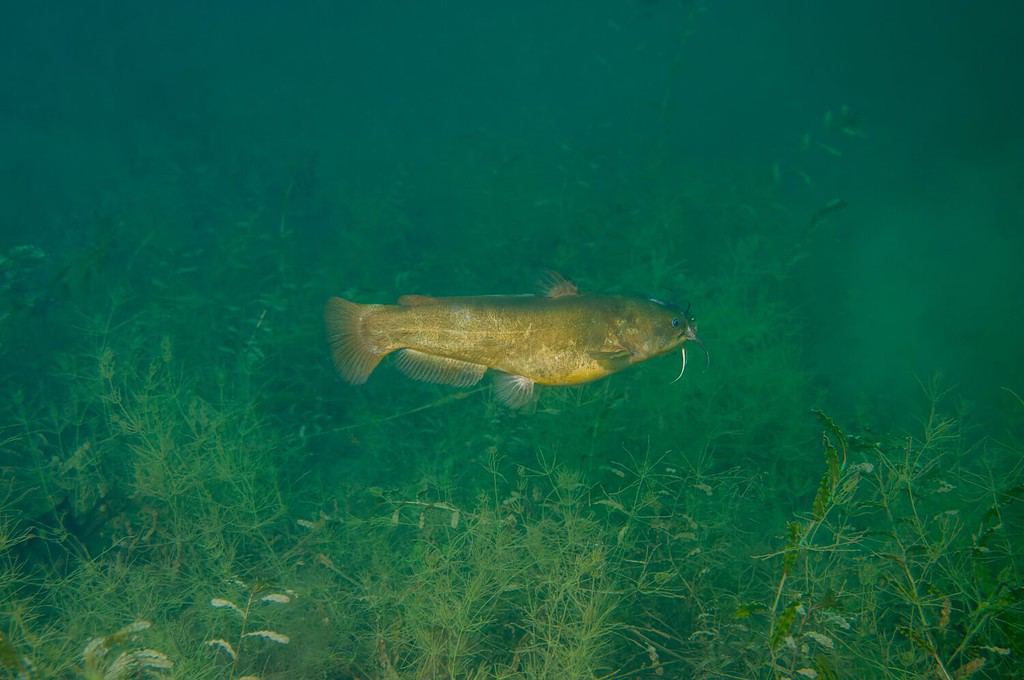
The yellow bullhead catfish are slightly venomous with a medium aggression level.
©Focused Adventures/Shutterstock.com
The yellow bullhead catfish (Ameiurus natalis) is a rather bland-looking fish. Of the family Ictaluridae, the yellow bullhead catfish is two to six pounds and reaches anywhere from 5-14 inches in length.
What’s interesting to note about these fish is that they are venomous. According to the Minnesota Department of Natural Resources, they offer their expertise on the poison of the yellow bullhead catfish.
“They also produce a mild poison that runs down the spines and into the wound of a victim punctured by one of these spines. While the poison causes a stinging or burning sensation if you are punctured, it is essentially harmless to humans.”
Yellow Perch (Perca flavescens)
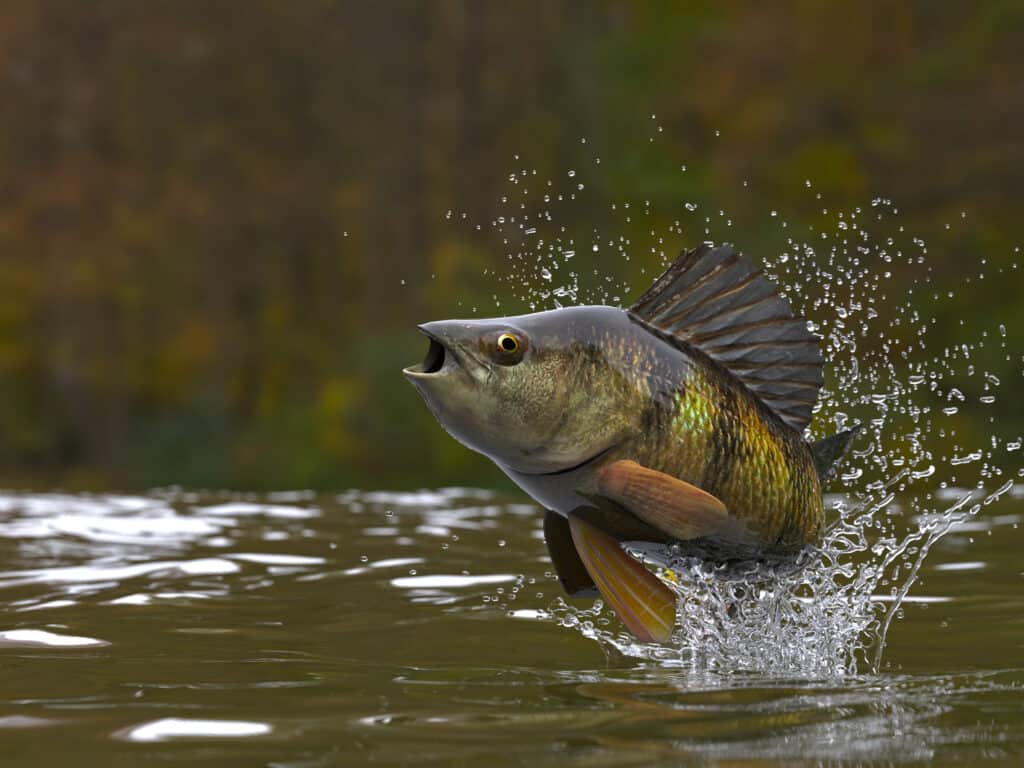
The yellow perch jumps out of the water to snare a favorite insect.
©bekirevren/Shutterstock.com
Yellow perch (Perca flavescens) are very bright, colorful-looking fish. They are yellow and gold in appearance. The yellow perch are omnivores and, as such, will feast on crustaceans and invertebrates usually.
These small fish weigh between two to three pounds and reach 4-14 inches in length. They have a very low aggression level, as fish that live in a school-type setting.
Caught on Lake Cascade in Idaho, the largest yellow perch weighed a whopping 89.62-pound fish. Take a look at the link and see just how enormous this fish is in comparison to the man who caught it.
Yellow Tang (Zebrasoma flavescens)
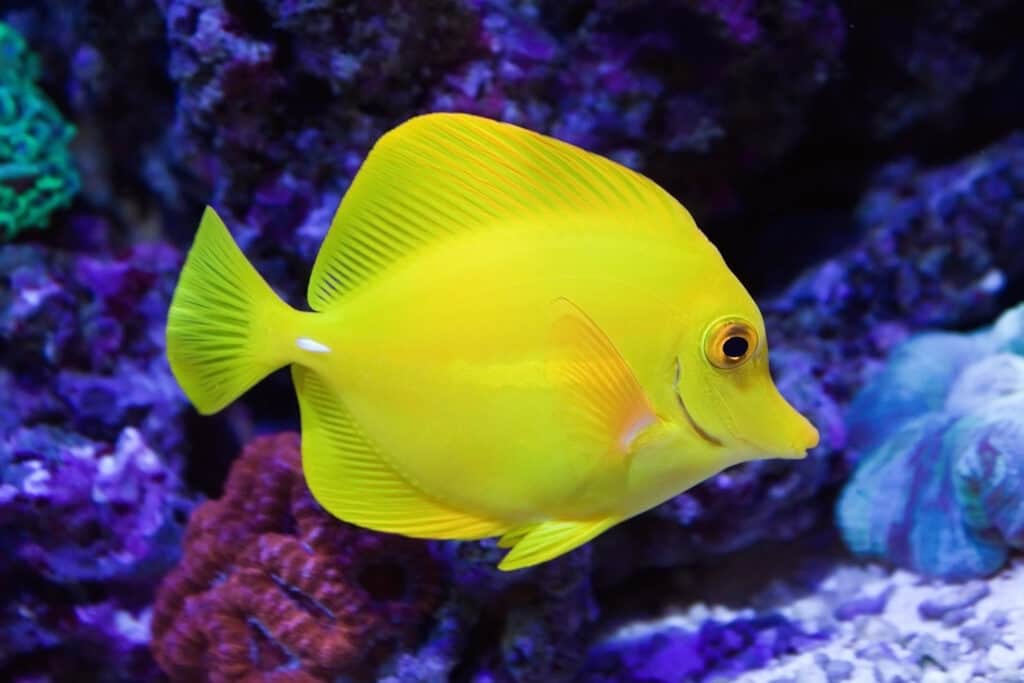
The yellow tang fish can live up to 30 years in the wild!
©mexrix/Shutterstock.com
The yellow tang (Zebrasoma flavescens) fish is rightly named this due to its bright yellow appearance. These small fish reaching up to eight inches in length, are solitary creatures.
Yellow tang fish are solitary animals. They are vulnerable to the many predators that will hunt and eat them such as sharks, octopuses, and crabs.
Yellowtail Snapper (Ocyurus chrysurus)
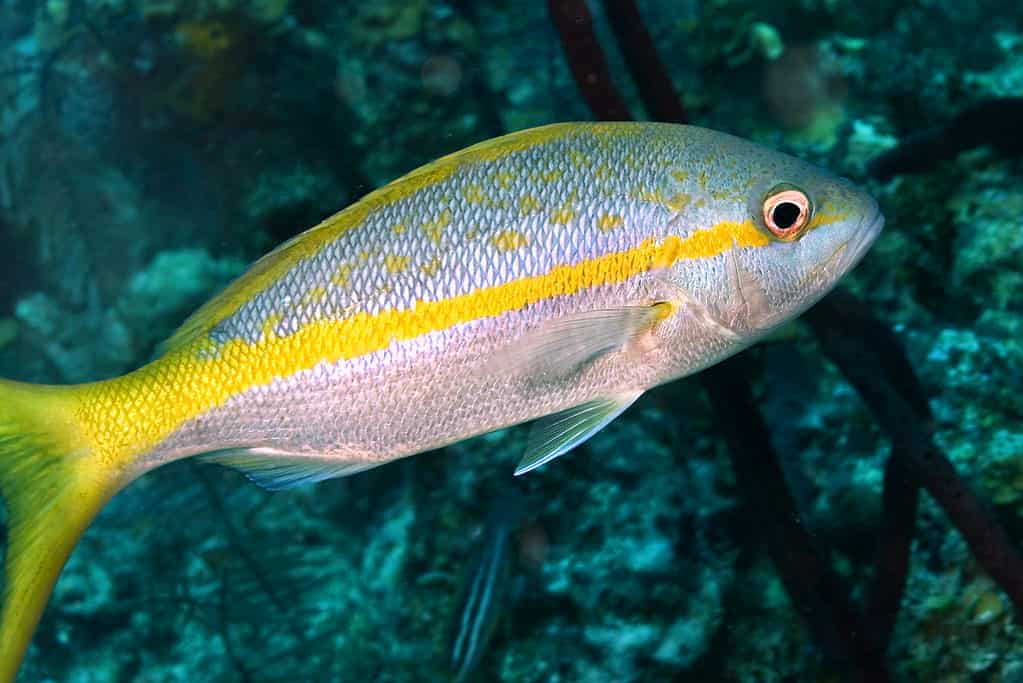
The biggest threat to the yellowtail snapper is overfishing.
©iStock.com/Alberto Carrera
Yellowtail snappers (Ocyurus chrysurus) have a yellow tail hence their name. These fish of the family Lutjanidae reach approximately 16 inches in length. And they weigh only between 2-5 pounds. While this might seem small when you think about it, this is “about the size of a large pizza.”
Yellowtail snappers can be found in oceans all over the world. They are often found in locations like the Atlantic Ocean and the Gulf of Mexico.
These snappers’ diets consist of zooplankton, shrimp, and various small fish. The United States Environmental Protection Agency defines zooplankton as the following. “Zooplankton are small, aquatic microorganisms in the water column that include crustaceans, rotifers, open water insect larvae, and aquatic mites.”
Yellow Lab (Labidochromis caeruleus)
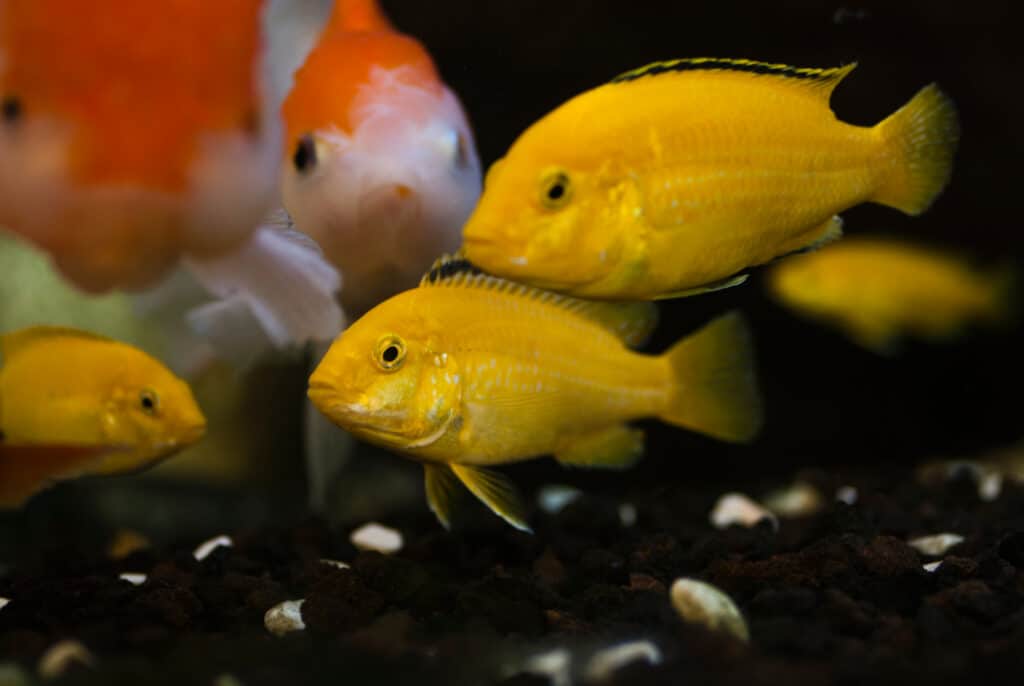
Yellow cichlids can be found in a school-type setting.
©Rani Restu Irianti/Shutterstock.com
Not to be confused with the yellow lab dog known as the Labrador Retriever Dog. Yellow lab (Labidochromis caeruleus) is a fish in the ocean known for its, you guessed it, yellow appearance.
These small fish are only five inches in length. This could almost fit in the palm of a human’s hand!
The yellow lab fish will eat food such as shrimp, bloodworms, vegetable matter, or fish pellet food.
Yellow Regal Peacock Cichlid (Aulonocara baenschi)
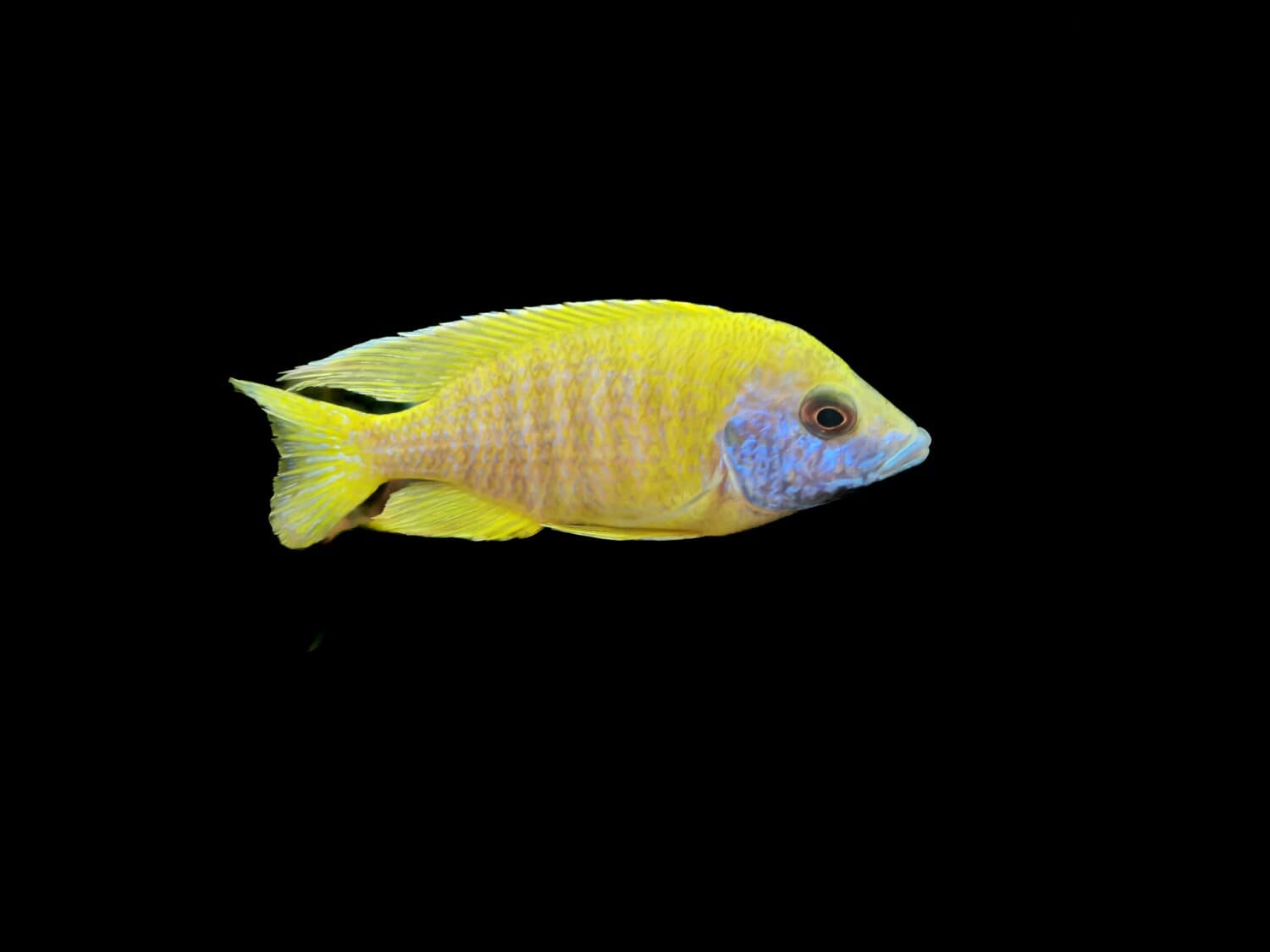
An interesting fact about this nkhomo-benga peacock (yellow regal peacock cichlid) is that it is often captured for aquarium trades.
©NiAk Stock/Shutterstock.com
Yellow regal peacock cichlid (Aulonocara baenschi) is a gorgeous-looking fish that is bright yellow with hues of blue tangled into its fins and scales. This fish also is more commonly referred to as the nkhomo-benga peacock fish. Rightly named, peacocks are known for their flourishing beauty of color it has.
The yellow regal peacock cichlid has only been found largely in Lake Malawi, Africa. It has also been sighted on occasion at the Maleri Islands, Chipoka, Nkhomo Reef near Benga, and Usisya.
Yellow King Piranha (Serrasalmus ternetzi)
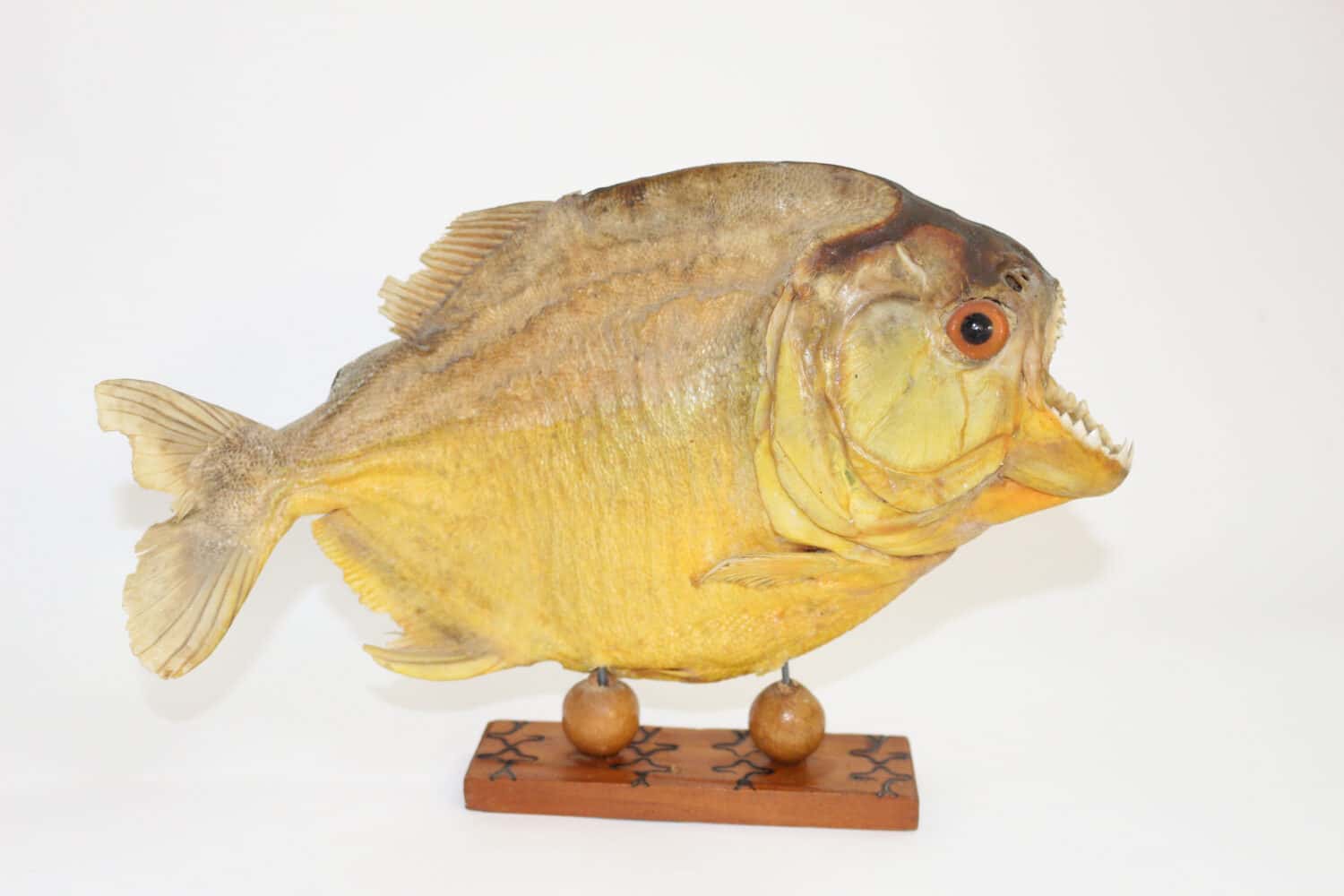
Yellow king piranha fish are circular in appearance.
©nena-er/Shutterstock.com
The yellow king piranha (Serrasalmus ternetzi) is labeled one of the largest piranhas in the wild. It reaches a length of 50 centimeters, or over a foot and a half long. When we think of piranhas, our minds typically go to something ugly with giant teeth. However, this piranha is labeled as a very beautiful fish.
According to Wikipedia, this yellow king piranha also goes by other names such as Rio São Francisco piranha, black-tailed piranha, and king emperor piranha.
This piranha’s diet consists mainly of small fish, insects, seeds, and aquatic plant material. As omnivores, piranhas are also known to seek out flesh to eat.
We have looked at the top 10 fish we found that start with the letter “y.” Now we can dive into the largest of these fish!
The Largest Fish That Starts With the Letter “Y”
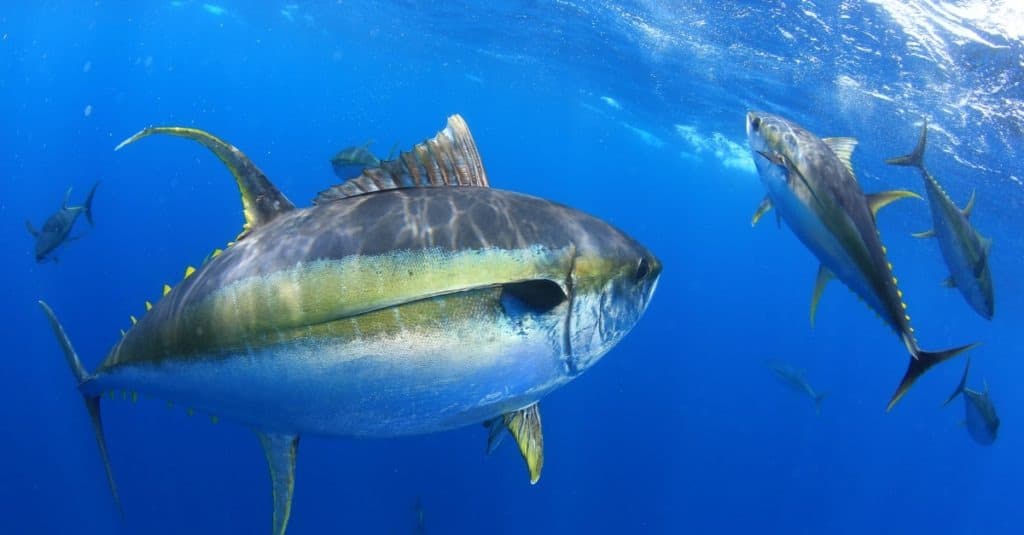
The yellowfin tuna fish can reach up to incredible speeds of 50 miles per hour!
©Al McGlashan/Shutterstock.com
We scoured the oceans to find the largest fish that start with the letter “y.” And while we came up with some interesting options, we landed on the yellowfin tuna (Thunnus albacares). This is the largest fish with the letter “y.”
Yellowfin tuna (Thunnus albacares) are very sleek in their appearance. Their almost metallic-looking bodies have fins yellow in appearance. In addition, they also have a yellow stripe down their bodies in some cases.
These large fish reach up to 450 pounds! To give us an idea of how much this weighs, we can compare it to the smaller grand pianos, which weigh 500 pounds. Can you imagine a grand piano just swimming towards you in the ocean?
Yellowfin tuna are carnivores that will feast on fish, crustaceans, cephalopods, and mollusks. Sharks, whales, marlins, seabirds, humans, and various other fish hunt the yellowfin tuna.
These top ten fish that we have found that start with the letter “y” just goes to show us how much variety there is in the ocean! Now that we have covered that let’s dive down deep and find our complete list of 80+ fish whose common names start with the letter “y.” And because we like to be as thorough as possible, we’ve added in their scientific names as well.
Complete List of #80+ Fish
| Common Names (Fish That Start With “Y”) | Scientific Names (Fish That Start With “Y”) |
|---|---|
| Yellowtail Snapper | Ocyurus chrysurus |
| Yellowfin Grouper | Mycteroperca venenosa |
| Yellowedge Moray | Gymnothorax flavimarginatus |
| Yellow-Eye Mullet | Aldrichetta forsteri |
| Yellowtail Barracuda | Sphyraena flavicauda |
| Yellow Bass | Morone mississippiensis |
| Yellowfin Tuna | Thunnus albacares |
| Yellowfin Croaker | Umbrina roncador |
| Yellowfin Pike | Dinolestes lewini |
| Yellow-Spotted Grayling | Thymallus flavomaculatus |
| Yarrell’s Blenny | Chirolophis ascanii |
| Yellowhead Jawfish | Opistognathus aurifrons |
| Yellowmargin Triggerfish | Pseudobalistes flavimarginatus |
| Yellow-Belly Bream | Serranochromis robustus |
| Yellowfin Croaker | Umbrina roncador |
| Yellow-Prawn Goby | Cryptocentrus cinctus |
| Yellow Acara | Aequidens metae |
| Yellow Jack | Aequidens metae |
| Yellow Perch | Perca flavescens |
| Yellowtail Clownfish | Amphiprion clarkii |
| Yellow Pigmy Brotula | Dinematichthys iluocoeteoides |
| Yellow Soldierfish | Myripristis clarionensis |
| Yellowtail Barracuda | Sphyraena flavicauda |
| Yellow Triplefin | Enneapterygius abeli |
| Yellow Fin Mojarra | Gerres cinereus |
| Yellow Garden Eel | Heteroconger luteolus |
| Yellow Razorfish | Xyrichtys sanctaehelenae |
| Yellow Meeki | Thorichthys affinis |
| Yasuhikotakia Caudipunctata – Speckle-tailed Loach | Botia caudipunctata |
| Yellow-Spotted Cat Shark | Scyliorhinus capensis |
| Yellow-Axil Chromis | Chromis xanthochira |
| Yellow-Striped Squirrelfish | Neoniphon aurolineatus |
| Yellow-Eye Mullet | Aldrichetta forsteri |
| Yellowback Fusilier | Caesio xanthonota |
| Yellowback Seabream | Dentex spariformis Ogilby |
| Yazoo Shiner | Notropis rafinesquei |
| Yellow-Eyed Comb-Tooth | Ecsenius melarchus |
| Yellow Dartfish | Nemateleotris magnifica |
| Yellowtail Kingfish | Seriola lalandi |
| Yaldwyn’s Triplefin | Notoclinops yaldwyni |
| Yellow-Threaded Goatfish | Parupeneus chrysonemus |
| Yellow Pygmy-Goby | Lubricogobius exiguus |
| Yellow-Tipped Squirrelfish | Sargocentron seychellense |
| Yellow Swordtail | Xiphophorus clemenciae |
| Yellow Weaver | Parapercis gilliesii |
| Yellow-Lined Grunter | Pomadasys quadrilineatus |
| Yellow-Mouth Eel | Gymnothorax nudivomer |
| Yellow Finned Medaka | Oryzias profundicola |
| Yawning Stardrum | Stellifer oscitans |
| Yazoo Darter | Etheostoma raneyi |
| Yellow-Barred Shrimp-Goby | Cryptocentrus pavoninoides |
| Yellow-Band Cardinalfish | Apogon cyanosoma |
| Yangtse Grenadier Anchovy | Coilia brachygnathus |
| Yellow-Eyed Toadfish | Torquigener parcuspinus |
| Yellowbanded Perch | Acanthistius cinctus |
| Yellow Barb | Barbodes semifasciolatus |
| Yellow Teardrop Butterflyfish | Chaetodon interruptus |
| Yellow Belly Cichlid | Cichlasoma salvini |
| Yellow-Green Goby | Priolepis aureoviridis |
| Yellow-Lip Threadfin Bream | Nemipterus aurifilum |
| Yellow And Blueback Fusilier | Caesio teres |
| Yellow Tilefish | Hoplolatilus luteus |
| Yellow-Edged Moray | Gymnothorax flavimarginatus |
| Yellow-Eye Combtooth-Blenny | Ecsenius ops |
| Yellow-Mouth Pikeblenny | Chaenopsis limbaughi |
| Yellow-Speckled Chromis | Chromis alpha |
| Yellow-And-Black Triplefin | Forsterygion flavonigrum |
| Yarra Pygmy Perch | Nannoperca obscura |
| Yellow-Belly Damsel | Pomacentrus auriventris |
| Yellow-Spotted Snake-Eel | Callechelys lutea |
| Yellow Bullhead Catfish | Ameiurus natalis |
| Yellow Tang | Zebrasoma flavescens |
| Yellow Banded Moenkhausia | Moenkhausia sanctaefilomenae |
| Yellow Julie | Julidochromis ornatus |
| Yellow King Piranha | Serrasalmus ternetzi |
| Yellow Kribensis | Pelvicachromis humilis |
| Yellow Lab | Labidochromis caeruleus |
| Yellow Regal Peacock Cichlid | Aulonocara baenschi |
| Yellow-Finned Xenotilapia | Xenotilapia flavipinnis |
The photo featured at the top of this post is © Rani Restu Irianti/Shutterstock.com
Thank you for reading! Have some feedback for us? Contact the AZ Animals editorial team.




